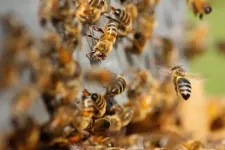(Press-News.org) Hospitalizations to treat pediatric gun injuries are expensive, and U.S. taxpayers and the poor are bearing the price, according to a new study from the Stanford University School of Medicine.
The study, which published online June 23 in PLOS ONE, found that the average cost of an initial hospitalization for a pediatric firearm injury is around $13,000. A total of about $109 million is spent on such hospitalizations in the country each year. The figures do not capture the total costs of rehabilitating young gunshot victims, which can be much higher.
Research into the financial, health and social costs of firearm injuries in the United States has focused mostly on adults, said the study's senior author, Stephanie Chao, MD, assistant professor of surgery.
However, nine of every 10 firearm injuries to children worldwide occur in the United States, according to a study published in 2015 in The American Journal of Medicine.
"We really need a better picture of the overall toll of firearms on children," Chao said.
Although gun deaths from school shootings and other mass-casualty incidents are widely publicized, most pediatric gun injuries occur less publicly, often when children accidentally discharge firearms they locate and handle without their parents' knowledge. "This takes a horrible toll on families and children's lives, and there is a financial toll," Chao said.
Drawing attention to kids' firearm accidents
For their study, the researchers used data on pediatric gun injuries from the Kids' Inpatient Database, which is compiled once every three years using discharge data from more than 4,100 U.S. hospitals. The researchers examined medical records from children released after their initial hospitalization for firearm injuries in 2003, 2006, 2009 and 2012.
They found that 19,015 children age 18 and under were hospitalized for firearm injuries during the four years included in the study, with an average of 4,753 admissions each year. About three-quarters of the injuries occurred in patients 16 to 18 years old. Injuries were caused by assault in 63% of cases and by unintentional discharge of a firearm in 26% of cases. In 3% of cases, injuries were self-inflicted. Most of the remainder were of undetermined cause.
Chao noted that the vast majority of children and teens who attempt suicide using firearms do not survive to be admitted to a hospital, so the study could not capture the impact of most self-inflicted wounds on families and communities.
The cost of hospitalizations to treat firearm injuries in children rose with time, even after adjusting for inflation, the study found. More than half of that cost, over $62 million per year, was paid by Medicaid, and a substantial additional portion of the cost was borne by uninsured patients, who accounted for 11% of all hospitalizations.
The results highlight how gun safety could be improved to protect children, Chao said, noting that the proportion of unintentional firearm injuries was especially high in young children. Among children age 5 and younger, 60% of gun injuries were unintentional, while among those aged 6-10, the figure was 56%.
"Accidental discharge of guns is something that is really actionable for lawmakers and pediatricians," Chao said, noting that doctors can educate families about the need to store guns locked and unloaded, and legislators can pass laws to restrict children's access to firearms. States with laws that restrict children's gun access have fewer pediatric gun injuries and fatalities, Chao's prior research has shown.
Not only would keeping children safe reduce families' heartache, it would also free up funding to support children's health in other ways, Chao said. "A lot of children are being harmed, and that's costly to our health care system," she said. "If we could prevent these injuries, the money could be spent in so many other places."
The study's lead author is Jordan Taylor, MD, a resident in surgery.
Other co-authors are research assistant Sriraman Madhavan; Ryan Han, undergraduate student in computer science; Julia Chandler, MD, resident in surgery; and Lakshika Tennakoon, research data scientist.
INFORMATION:
The Stanford University School of Medicine consistently ranks among the nation's top medical schools, integrating research, medical education, patient care and community service. For more news about the school, please visit http://med.stanford.edu/school.html. The medical school is part of Stanford Medicine, which includes Stanford Health Care and Stanford Children's Health. For information about all three, please visit http://med.stanford.edu.
In a groundbreaking study, a team of UC Davis researchers has discovered a special type of stem cell that can reduce the amount of the virus causing AIDS, boosting the body's antiviral immunity and repairing and restoring the gut's lymphoid follicles damaged by the simian immunodeficiency virus (SIV), the equivalent of the human immunodeficiency virus (HIV) in non-human primates. ...
Adult corals that survive high-intensity environmental stresses, such as bleaching events, can produce offspring that are better suited to survive in new environments. These results from a series of experiments conducted at the Bermuda Institute of Ocean Sciences (BIOS) in 2017 and 2018 are deepening scientists' understanding of how the gradual increase of sea surface temperatures and other environmental disturbances may influence future coral generations.
Researchers on the project included BIOS marine ecologists Samantha de Putron and Gretchen Goodbody-Gringley (now with the Central Caribbean Marine Institute), ecophysiologist Hollie Putnam at the University of Rhode Island (URI), and Kevin Wong, then ...
WACO, Texas (June 23, 2021) - When an organization supports its employees who choose to adopt children, the employees, their families, the adopted children and the organization itself experience positive benefits and outcomes, according to new research from Baylor University.
The study, "It Takes a Village: How Organizational Support for Adoption Positively Affects Employees and Their Families," is published in the Journal of Occupational and Organizational Psychology. Researchers from Baylor's Hankamer School of Business include Matthew J. Quade, Ph.D., associate professor of management; ...
FOR IMMEDIATE RELEASE
STUDY SUGGESTS THAT SMOOTHER SILICONE BREAST IMPLANTS REDUCE SEVERITY OF IMMUNE SYSTEM REACTIONS
According to researchers at Johns Hopkins Medicine, the Massachusetts Institute of Technology (MIT) and Rice University in Houston, silicone breast implants with a smoother surface design have less risk of producing inflammation and other immune system reactions than those with more roughly textured coatings. Results of the experiments using mice, rabbits and samples of human breast tissue advance knowledge of how the body responds to such implants, providing new information to physicians and affirming ...
PHILADELPHIA - Researchers have been investigating the potential health-promoting qualities of extra virgin olive oil (EVOO) for decades, including its possible medicinal value for preventing cancer, Alzheimer's, and cardiovascular disease, as part of the well-known Mediterranean diet. However, consumers in the U.S. have been slow to embrace it as a staple in their diet. This reluctance, say scientists, might be in part due to EVOO's bitter taste and pungency, which is caused by the presence of substances known as phenolic compounds, the very ones believed to contribute to EVOO health benefits. In 2005, researchers from the Monell Chemical ...
Microscopy is an essential tool in many fields of science and medicine. However, many groups have limited access to this technology due to its cost and fragility. Now, researchers from the Universities of Göttingen and Münster have succeeded in building a high-resolution microscope using nothing more than children's plastic building bricks and affordable parts from a mobile phone. They then went on to show that children aged 9-13 had significantly increased understanding of microscopy after constructing and working with the LEGO® microscope. Their results were published in The Biophysicist.
The researchers designed ...
New York, NY--June 23, 2021--A challenging frontier in science and engineering is controlling matter outside of thermodynamic equilibrium to build material systems with capabilities that rival those of living organisms. Research on active colloids aims to create micro- and nanoscale "particles" that swim through viscous fluids like primitive microorganisms. When these self-propelled particles come together, they can organize and move like schools of fish to perform robotic functions, such as navigating complex environments and delivering "cargo" to targeted locations.
A Columbia Engineering team led by Kyle Bishop, professor of chemical engineering, is at the forefront of studying and designing the dynamics of active colloids powered by chemical reactions ...
A new study published in Nature Communications finds that piles of sand grains, even when undisturbed, are in constant motion. Using highly-sensitive optical interference data, researchers from the University of Pennsylvania and Vanderbilt University present results that challenge existing theories in both geology and physics about how soils and other types of disordered materials behave.
Most people only become aware of soil movement on hillsides when soil suddenly loses its rigidity, a phenomenon known as yield. "Say that you have soil on a hillside. Then, if there's an earthquake or it rains, this material that's apparently ...
WHAT:
National Institutes of Health scientists and their collaborators have identified an internal communication network in mammals that may regulate tissue repair and inflammation, providing new insights on how diseases such as obesity and inflammatory skin disorders develop. The new research is published in Cell.
The billions of organisms living on body surfaces such as the skin of mammals--collectively called microbiota--communicate with each other and the host immune system in a sophisticated network. According to the study, viruses integrated in the host genome, remnants of previous infections called endogenous retroviruses, can control how the host immune system and the microbiota ...
Beekeepers across the United States lost 45.5% of their managed honey bee colonies from April 2020 to April 2021, according to preliminary results of the 15th annual nationwide survey conducted by the nonprofit Bee Informed Partnership (BIP). These losses mark the second highest loss rate the survey has recorded since it began in 2006 (6.1 percentage points higher than the average annual loss rate of 39.4%). The survey results highlight the continuing high rates of honey bee colony turnover. The high loss rate was driven by both elevated summer and winter losses this year, with no clear progression toward improvement ...






